On the Road is a weekday feature spotlighting reader photo submissions.
From the exotic to the familiar, whether you’re traveling or in your own backyard, we would love to see the world through your eyes.
We have had so many wonderful OTR posts lately!
If you have been thinking about submitting a post or a series to OTR, this would be a great time. We have had quite a backlog for awhile, with some posts taking 2 months to be published after submission. Right now, we have 2 weeks of posts in the queue, so if you submit something this week, you should be seeing it published quite soon!
Here’s the schedule for this week:
Albatrossity
It was good to go through my Tanzania images again, not only to find some shots I had not previously processed, but also just to relive the trip and recall those days (and nights) in some gorgeous and wild places. But now we are back in Kansas, as Dorothy did not say to Toto, for some more spring migrants and summer residents of Flyover Country. I will be in southeastern Arizona by the time you read this, and hope to have lots of images to share from there as well.
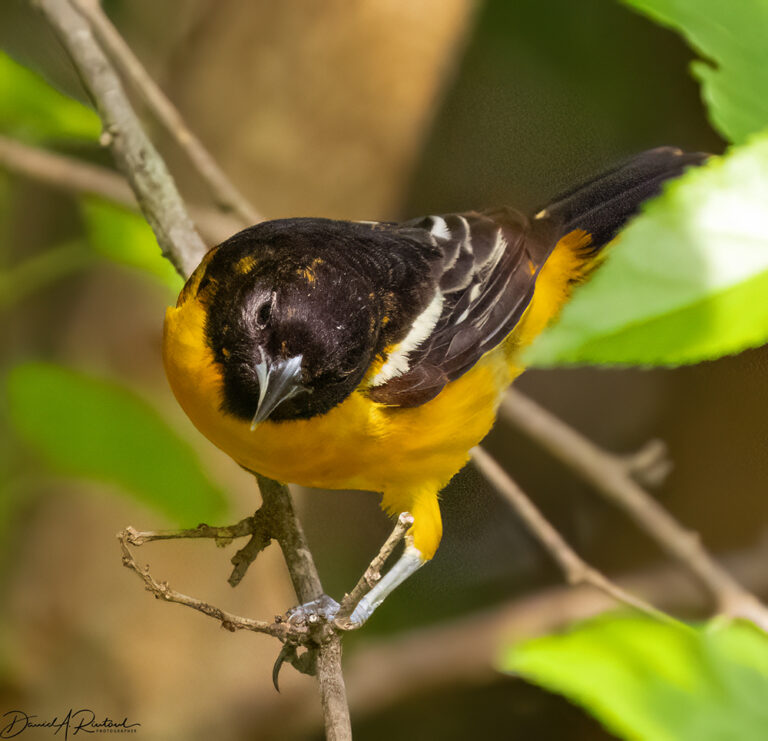
First up are the orioles. We’ve already had looks at female Baltimore Orioles (Icterus galbula) in previous posts this summer, but the males are also quite stunning. This is a male is his second summer on the planet, but he as showing all the cheeky attitude of an elder! Click here for larger image.
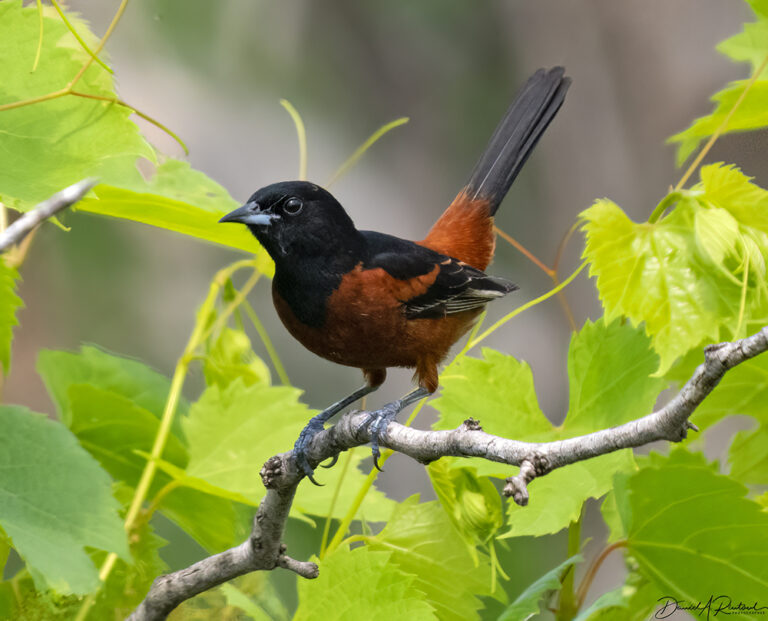
Our other common oriole, the Orchard Oriole (Icterus spurius) seems to be more abundant than usual this summer. I’ve had numerous opportunities to spend some quality time with them, including the time I spent with this adult male, He was guarding a patch that contained a large wild grape vine, and I suspect that he knows how valuable that real estate will be later in the summer. Click here for larger image.
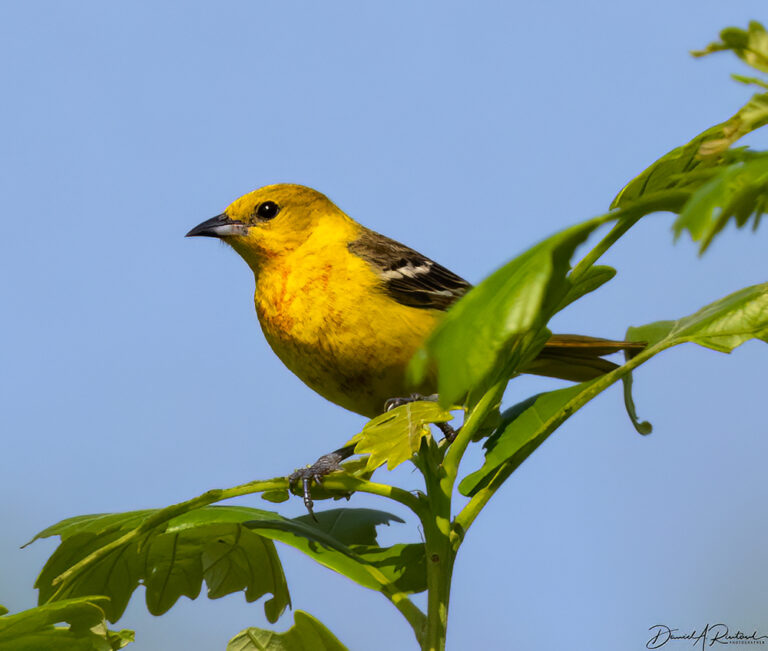
Orchard Oriole females, like this one, are colorful but do not have that chestnut-and-black color scheme that characterizes the males. As they age, however, many female birds begin to show hints of male plumage characters, and this female has some reddish feathers on the chest and head, regions which would be solid yellow in a younger female. This is attributed to age-dependent changes in the estrogen/testosterone ratio; similar changes occur in human females and can cause them to be more male-like (mustache growth, hair loss, etc.) as they age. Click here for larger image.
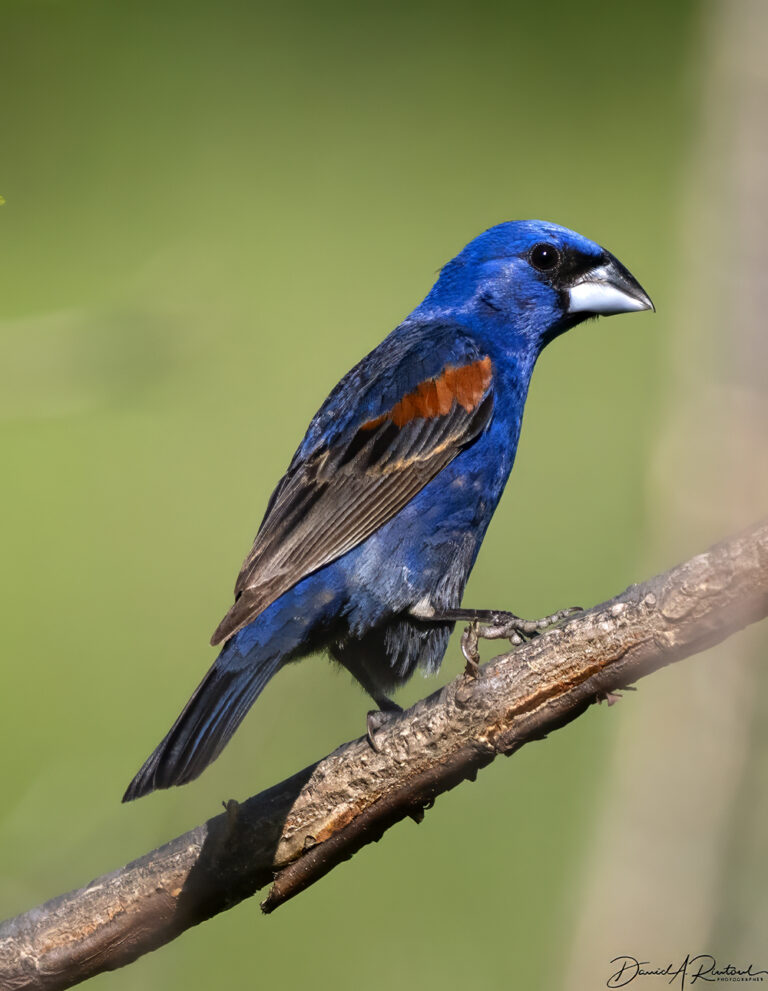
Another species that seems to be quite abundant here this year is the Blue Grosbeak (Passerina caerulea). These are quite vocal, often heard well before they are seen, but clearly an effort to see this gorgeous bird will be well worth it. Click here for larger image.
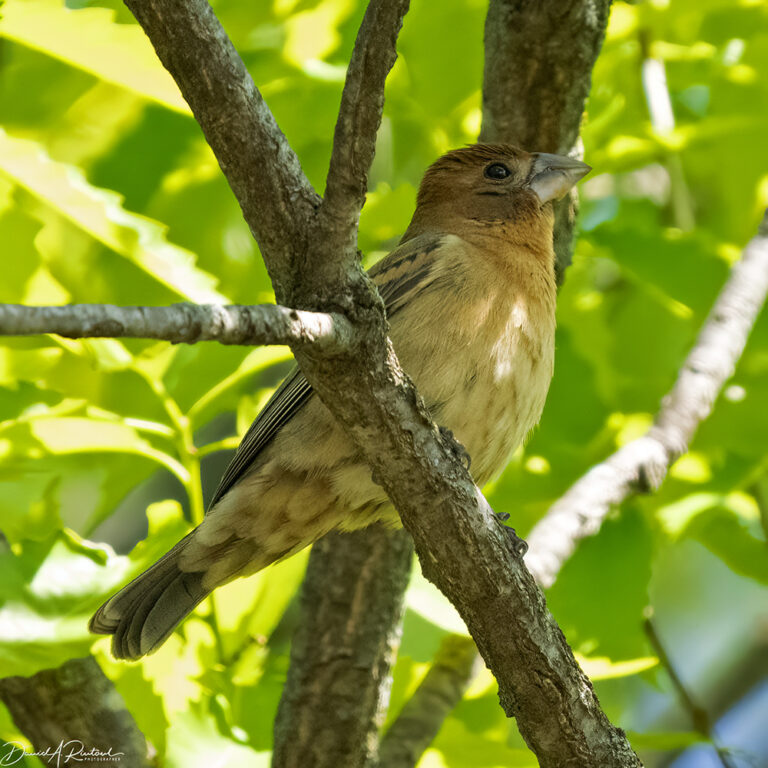
Female Blue Grosbeaks share that honking big bill with the male of the species, but otherwise are pretty plain-looking. And since they are generally silent, they can be much harder to find and admire. Click here for larger image.
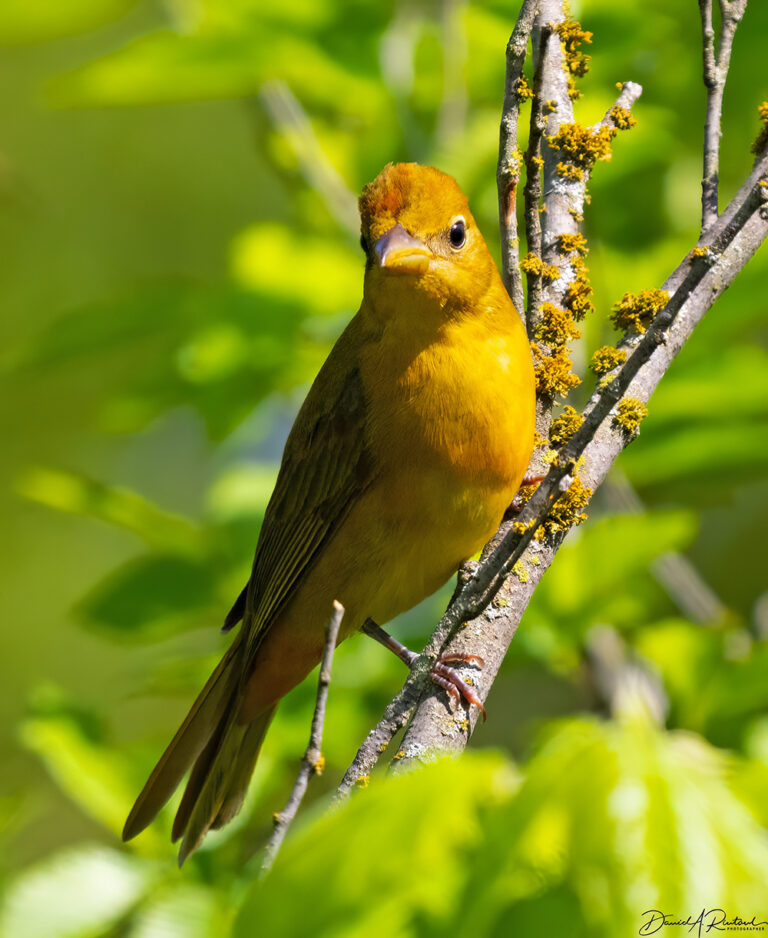
Another bird with a honking big bill, Summer Tanager (Piranga rubra) males come in two different flavors, depending on their age. Males two years old and older are solid read. This is a male in his second summer, mostly yellow but with patches of red seemingly randomly located on the head and body. No two second-year Summer Tanager males are alike; those red feathers can be few or extensive, and can be just about anywhere on the bird. Click here for larger image.
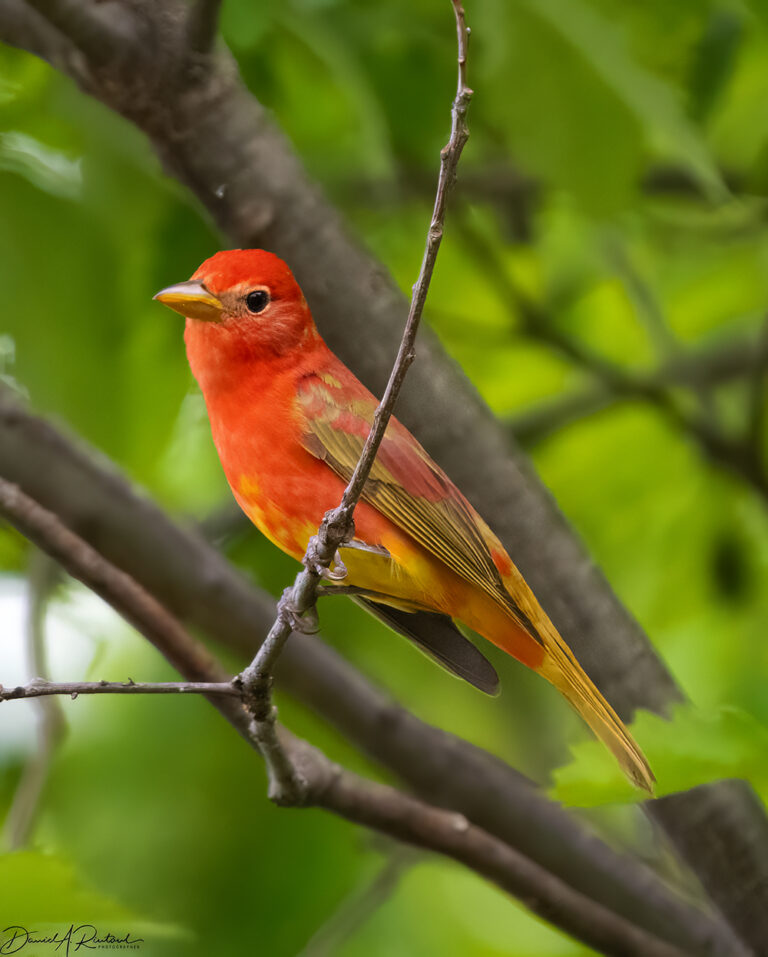
Here, for example, is another second-year male Summer Tanager, with lots of red and very little yellow plumage. As you might expect, this is a bird that can be very confusing to novice birders. Click here for larger image.
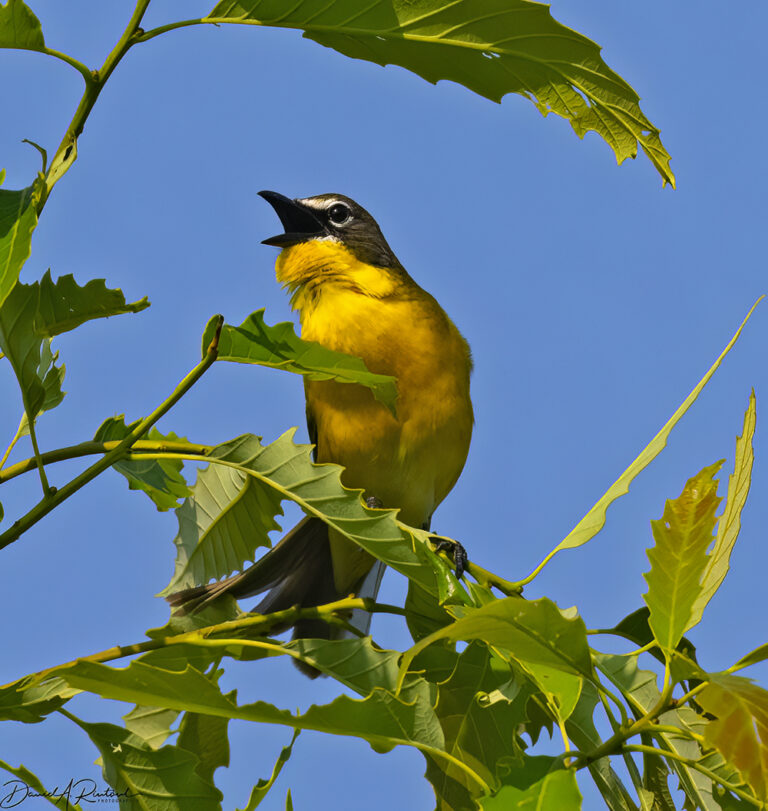
Yellow-breasted Chats (Icteria virens) are well-named; I heard this guy long before I located bum at the top of a small tree. He was also cooperative enough to let me shoot some video. He was in a location where I had not found this species in the past, and I hoped that he would find a mate and settle in there for the summer. But later in the summer he was nowhere to be found; I hope he found love and fulfillment wherever he ended up. Click here for larger image.
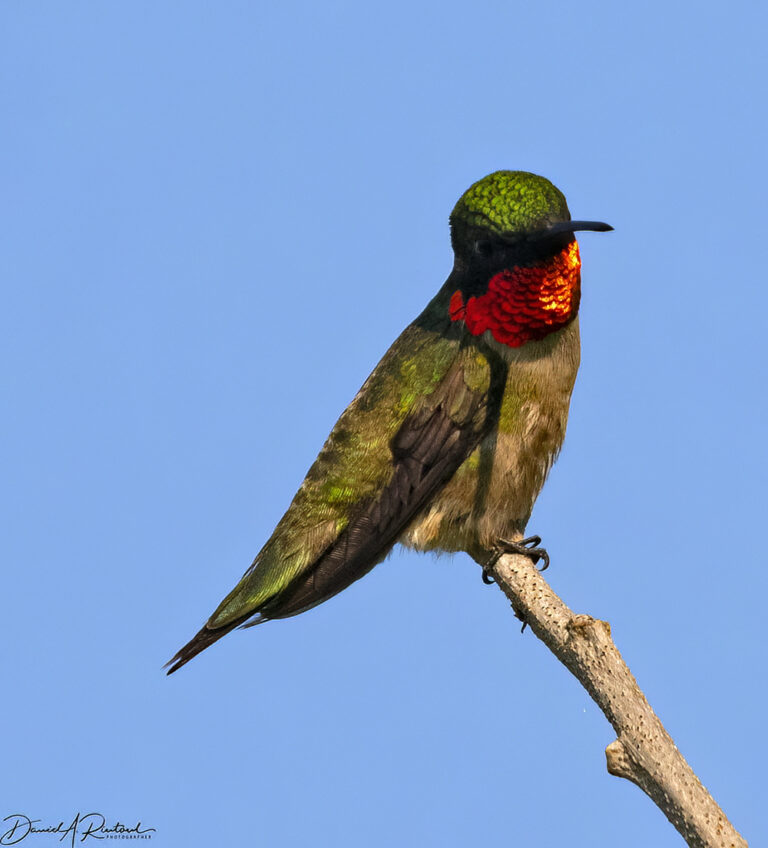
Summer would be incomplete without hummingbirds, and even though Flyover Country has only one species of hummingbird that breeds here, they are welcome summer guests. This male Ruby-throated Hummingbird (Archilochus colubris) was kind enough to turn his head and allow his aptly-named ruby throat feathering to catch the morning sun. Click here for larger image.
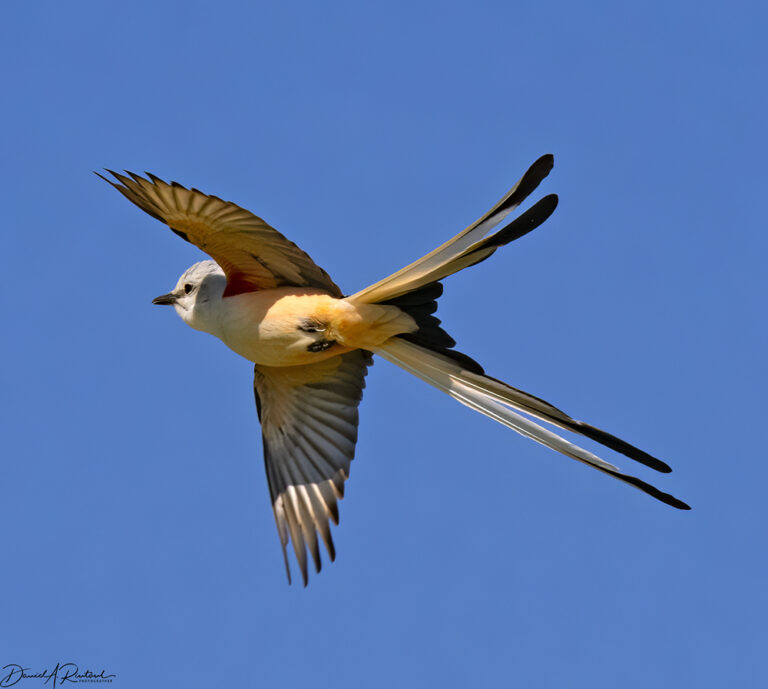
And the final bird this week is another iconic summer resident of Flyover Country, the Scissor-tailed Flycatcher (Tyrannus forficatus). These are a challenge to photograph in flight; those long tail feathers are often out of the frame. I’m still looking for baby scissortails this summer, but if I find some you can be sure I will include them in a future post! Click here for larger image.

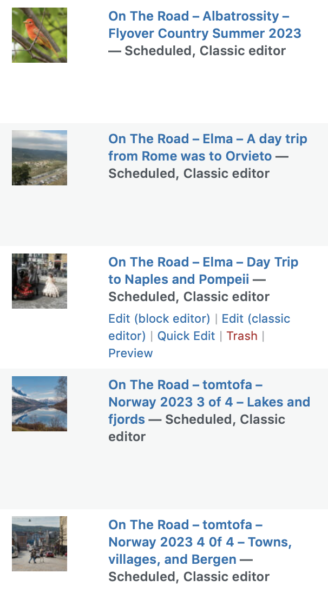
eclare
The hummingbird is beautiful!
OzarkHillbilly
I look forward to hearing the Summer Tanagers singing in the early morning hours every year. It took me quite some time before I spotted my first female on the homestead.
AM in NC
I learn so much with each and every one of your posts. Plus, you know, THE PHOTOS. Thank you so much for these!
SteveinPHX
Thank you for photos. I hope to be in SE Arizona in Sept for a few days with binos & bird books in hand. Always enjoy visiting that area.
Albatrossity
@eclare:
Thanks. He is beautiful, and his relatives in southeastern AZ are beautiful too! I got lots of photos of lots of species of hummingbirds so far, and I have one more day to collect some more.
JoyceCB
I have driven many many kilometers to see Scissor-tailed Flycatchers. They are uncommon visitors to southern Ontario, but what a treat when they do turn up!
Rebel’s Dad
I thought the yellow bird was my favorite until I saw the others! Do I have to pick just one? I love them all.
Albatrossity
And to add to WaterGirl’s comments at the top, if you have never submitted a post and photos to OTR, and if you are one of the first 5 jackals to put together a post that has 10 pictures from anywhere/anytime similar to the “Every Picture Tells A Story” post like this one, I will send you a 2024 Albatrossity Bird Photo Calendar later this year. I’d love to see new contributors to this series, and that “Every Picture Tells A Story” format should make it possible for just about anyone to put together a contribution and get it into the queue.
So the first five folks to do that can get a free calendar!
mvr
Thank you for these. That flycatcher photo is both a nice photo and impressive given the challenge of photographing a moving flying bird!
Thanks!
pieceofpeace
Your photos are the best way to begin a day.
The colors in this selection are stunning, and display a high form of art, perhaps the best available. Many thanks for these, all of ’em.
About a month ago, since I awaken around 4-5 every morning, I noticed the sound of an owl. He/she must live in a nearby tree as his vocal wake-up accompanies as I get up and going, with a reminder to be alert, pay attention and maybe discover some wise-ness. Whatever, he’s a good morning companion.
Xavier
Interesting piece of trivia about southeastern Arizona: Vladimir Nabokov wrote parts of the novel Lolita while studying butterflies in the Portal AZ area.
BigJimSlade
What a wonderful set! I love the Blue Grosbeak :-)
We’ve had some birds of prey in our neighborhood lately. We’re in a canyon and right next to Topanga State Park, so it’s not unexpected. Each evening between 8 and 10pm we start hearing eeeyooot (“o” like in “hot”, not “moon”). I know there are at least 2 of them because I went outside and one was perched on top of a tree about 15 yards away. It called out, and was answered from across the street. I found recordings of red-tailed hawks on the interwebs and it sounds pretty much like that.
StringOnAStick
Gorgeous and informative, as always. Thanks!
Yutsano
What has been accomplished has been witnessed.